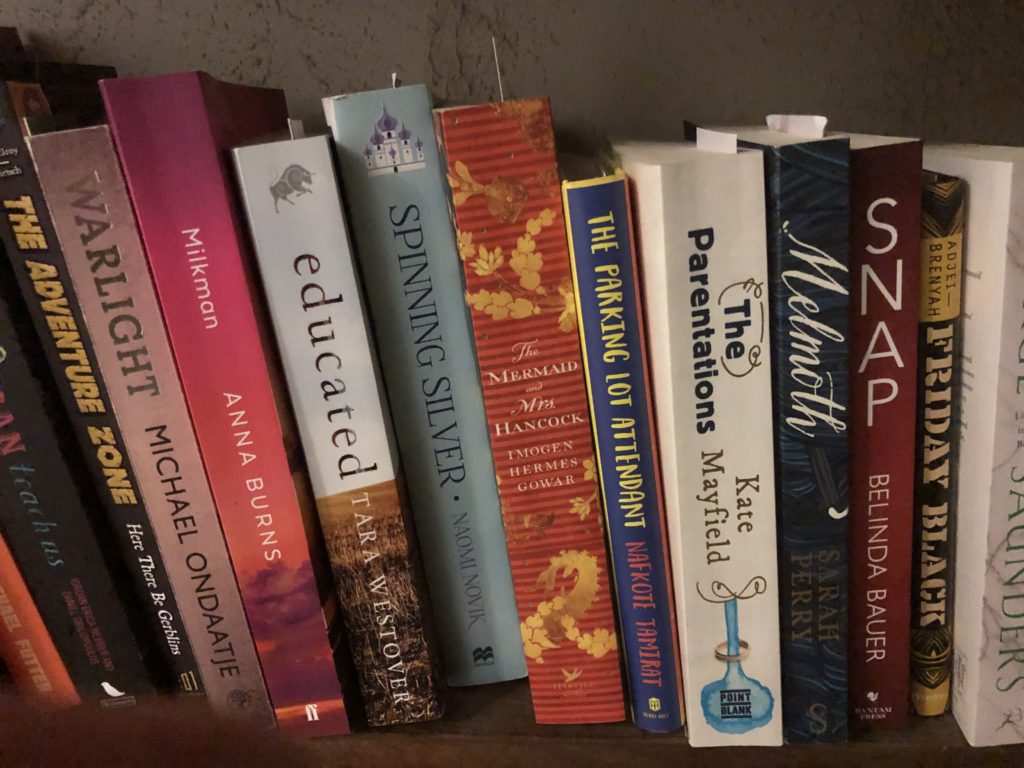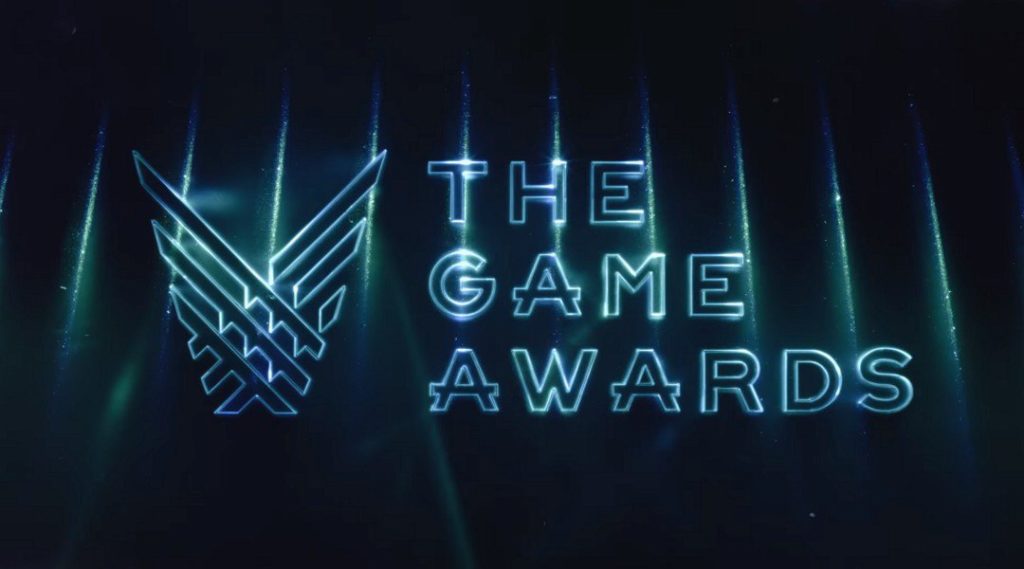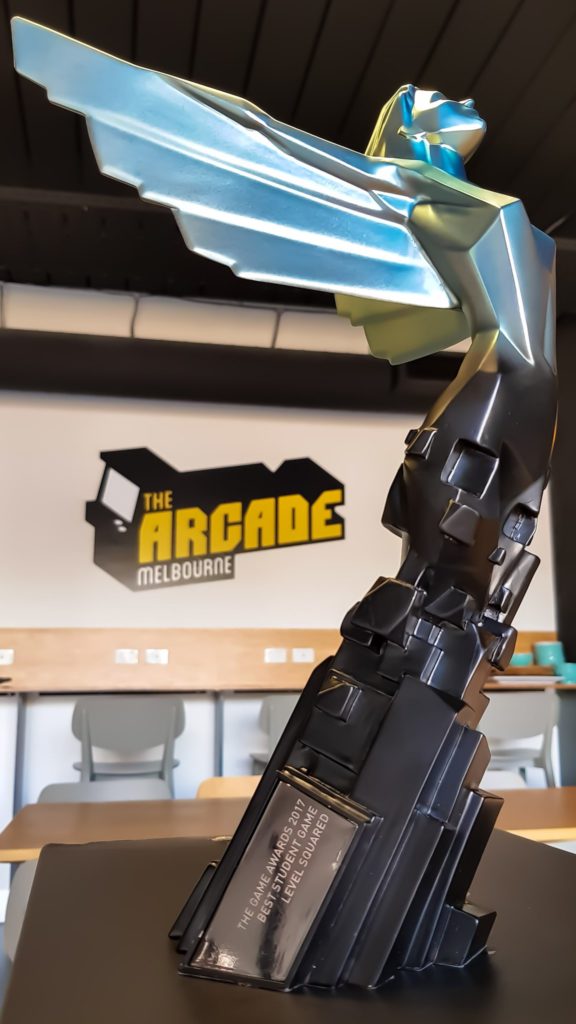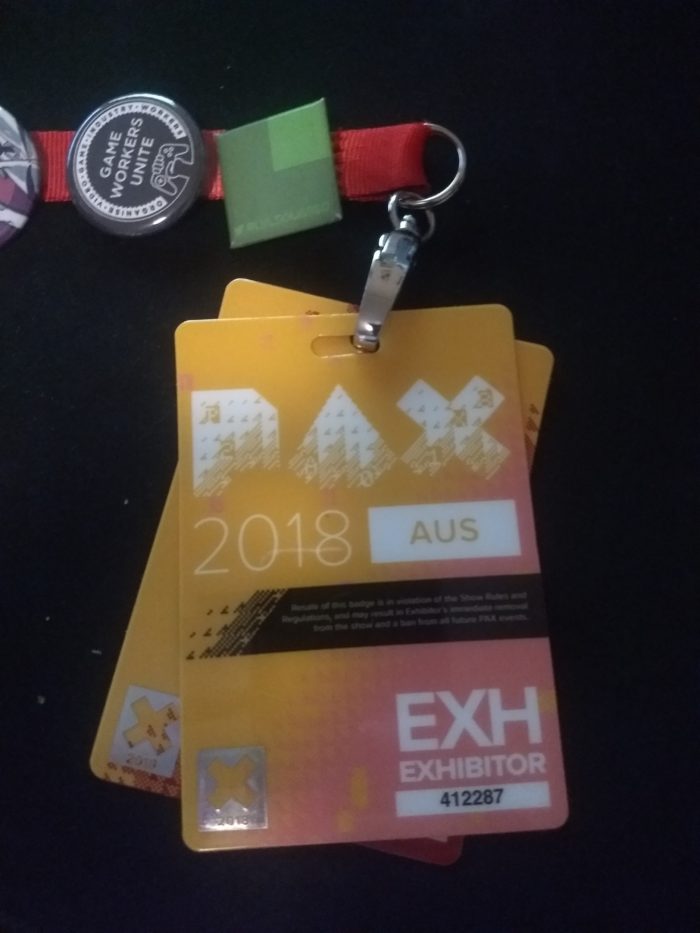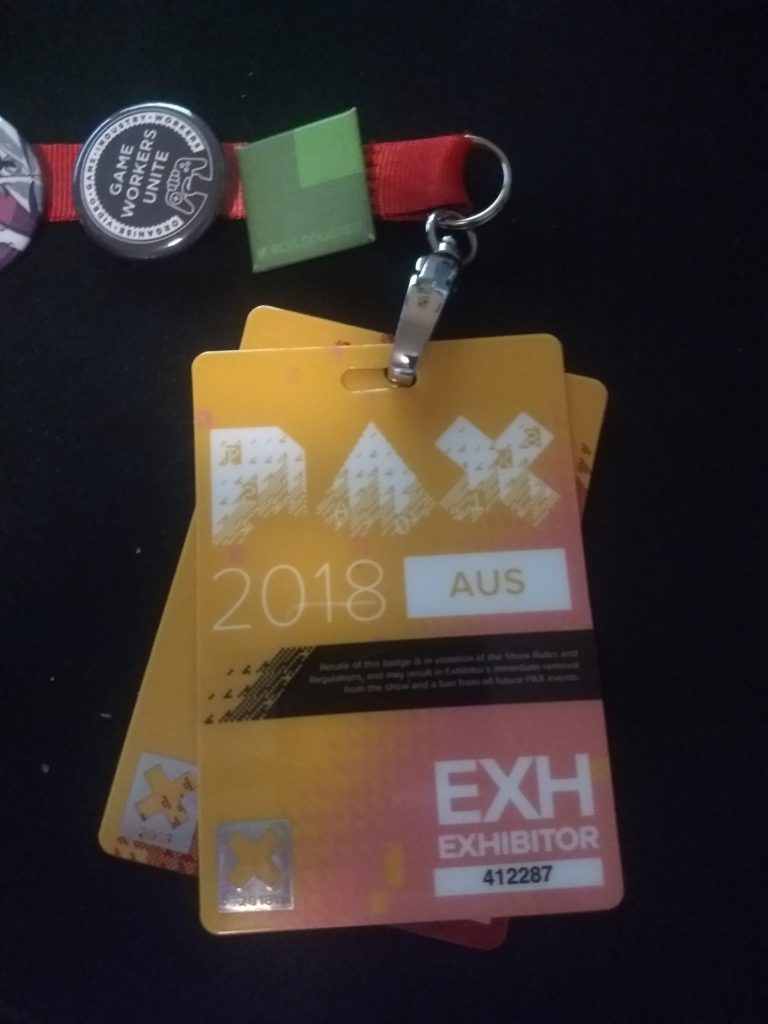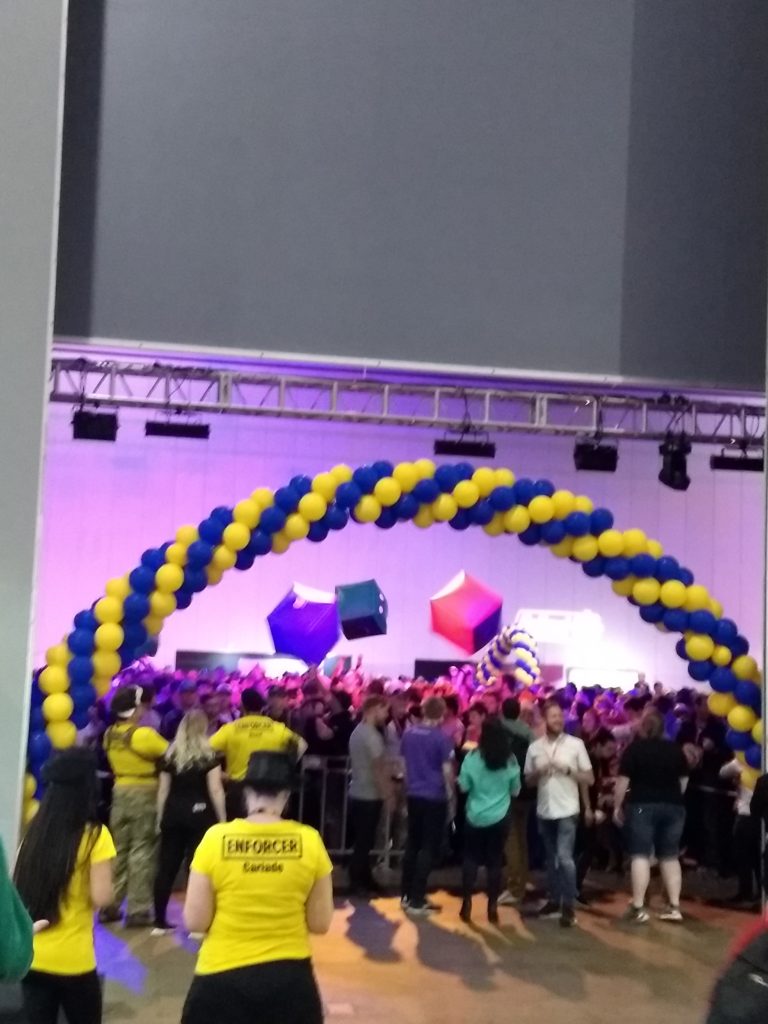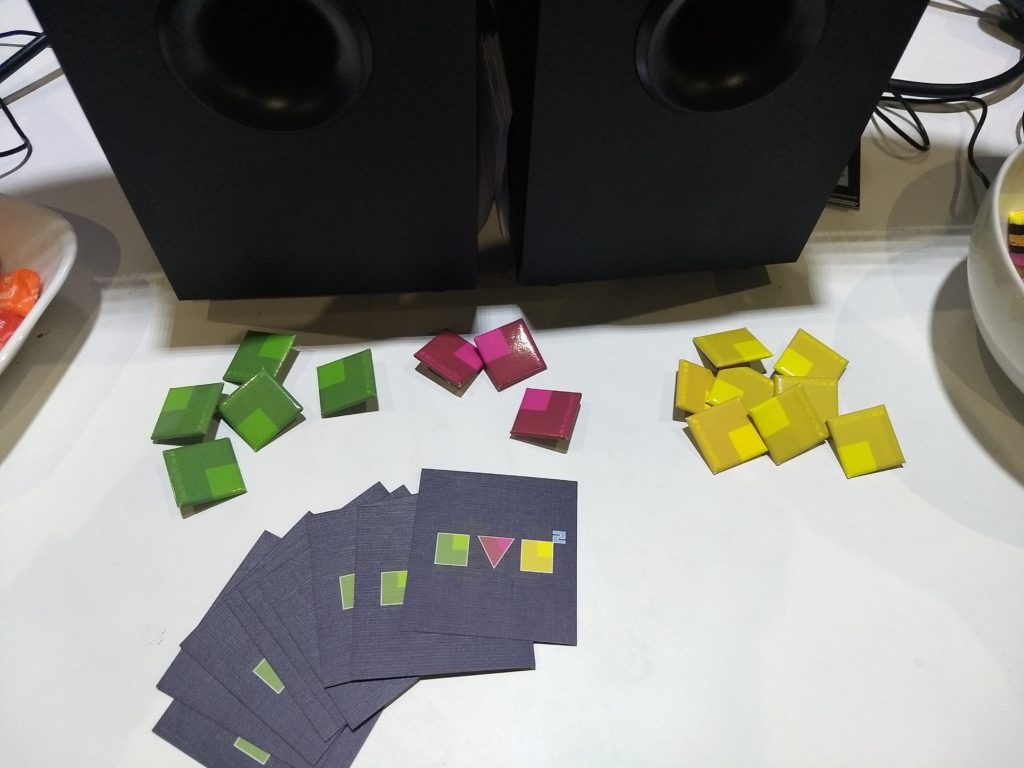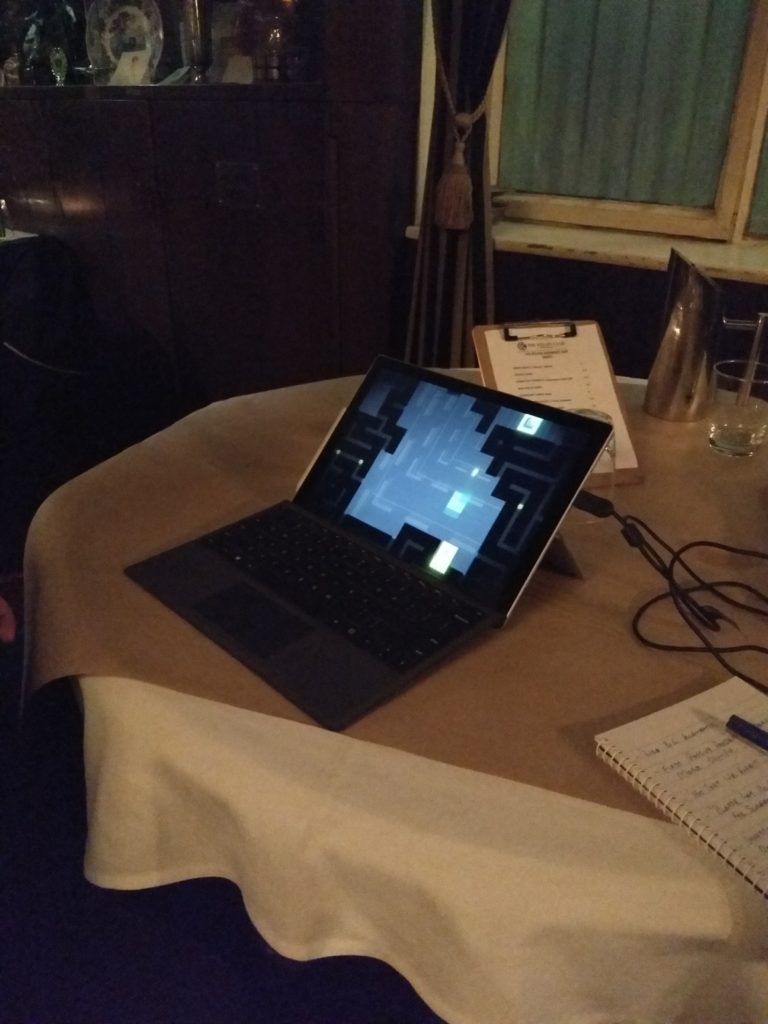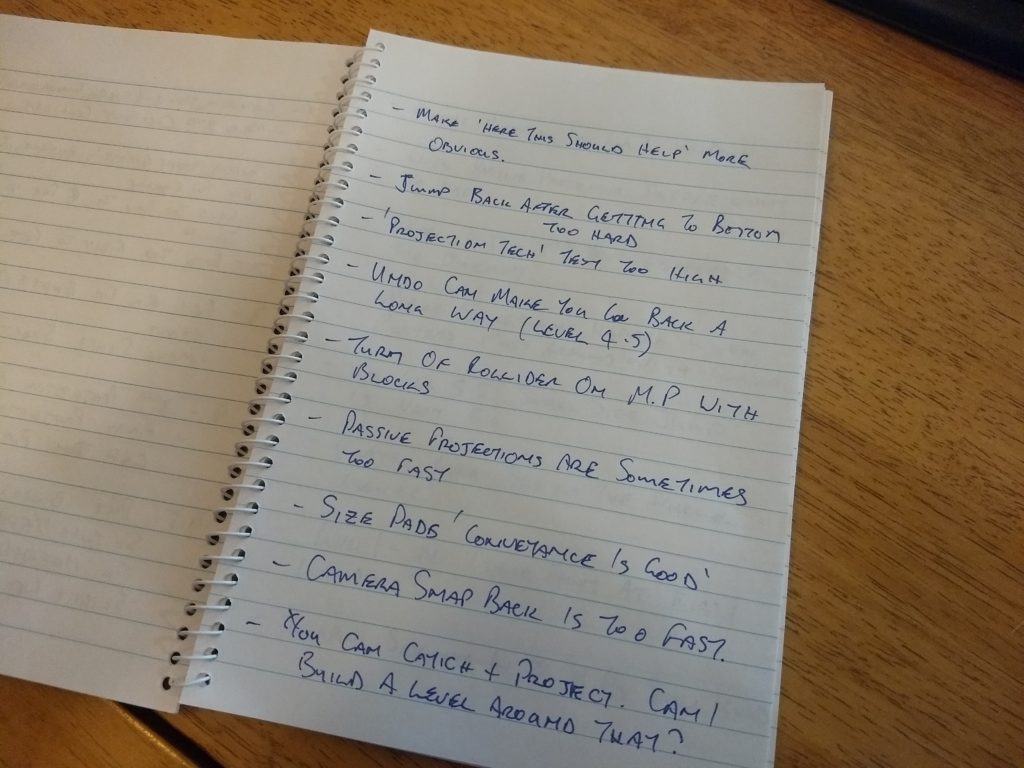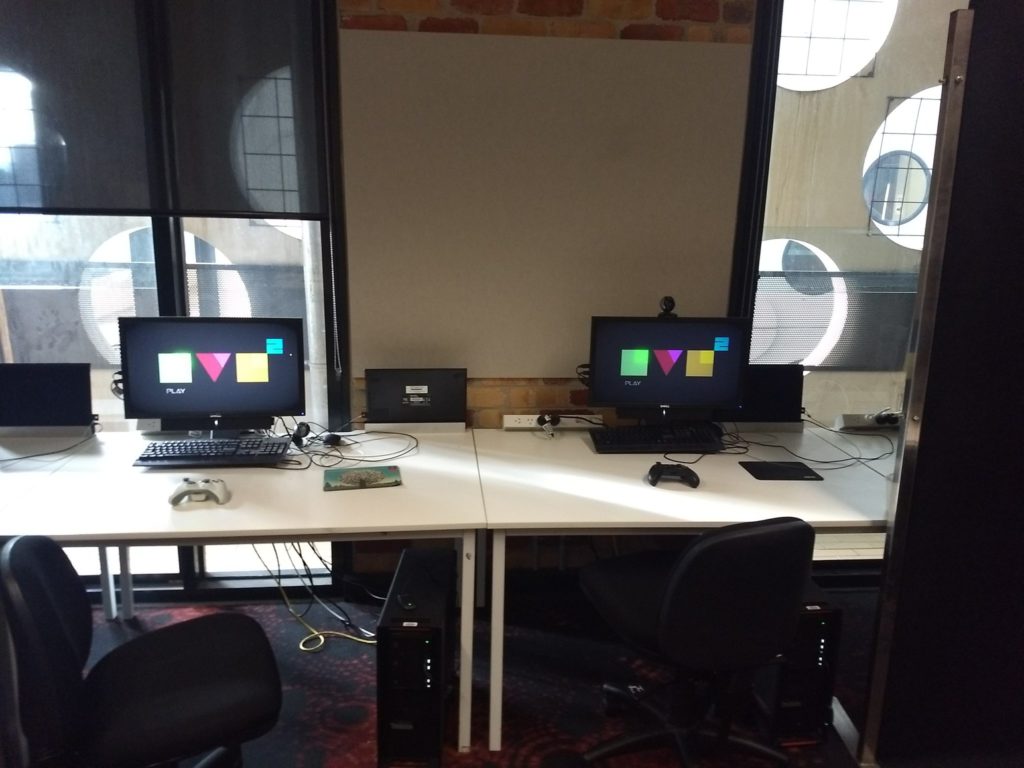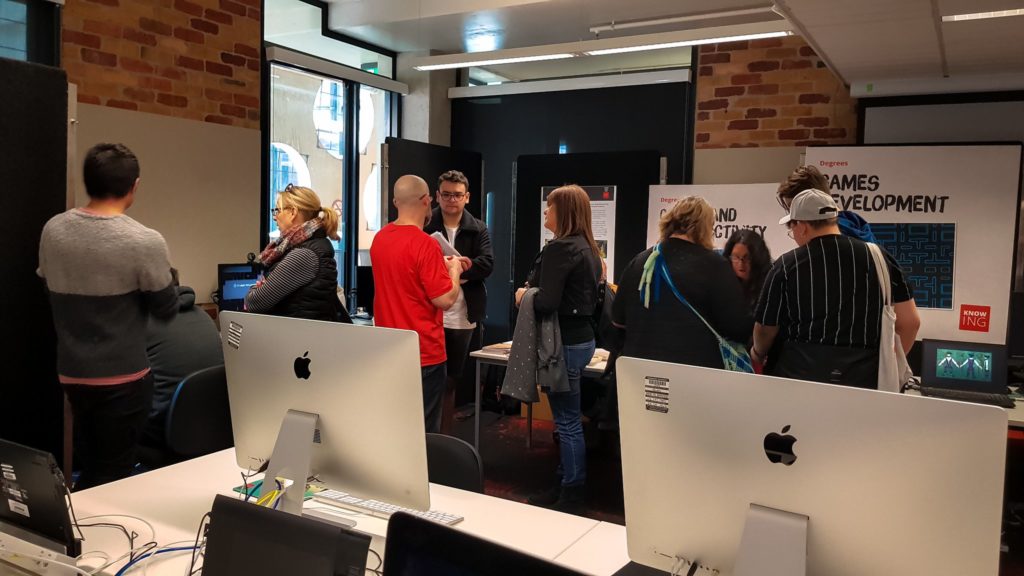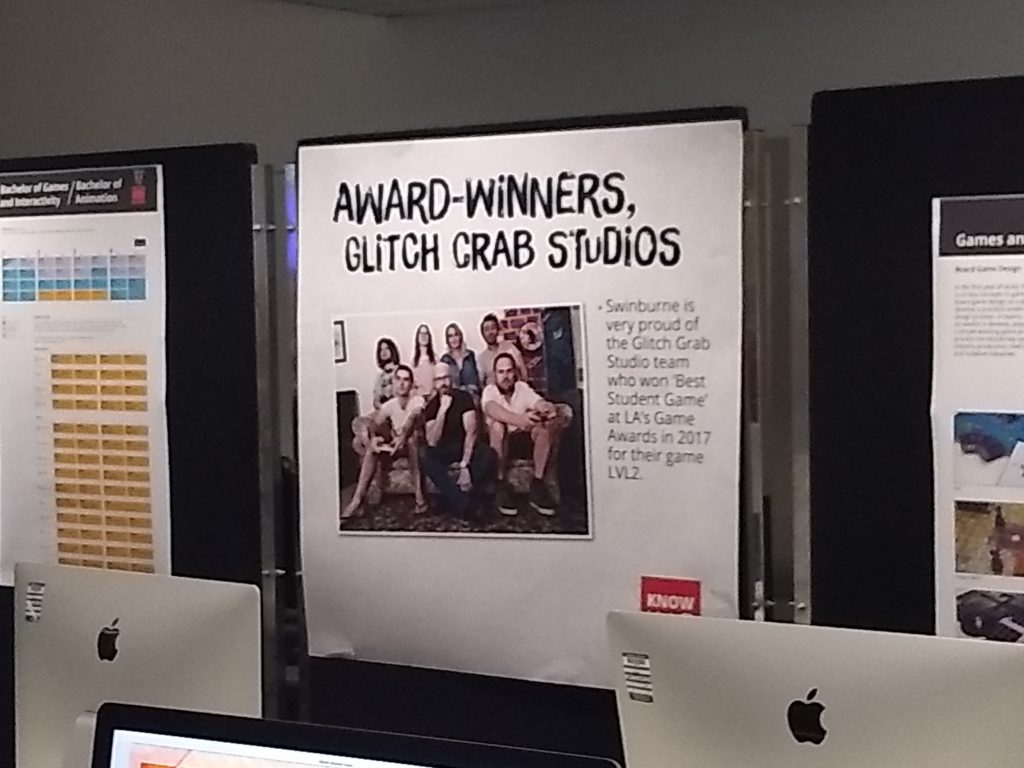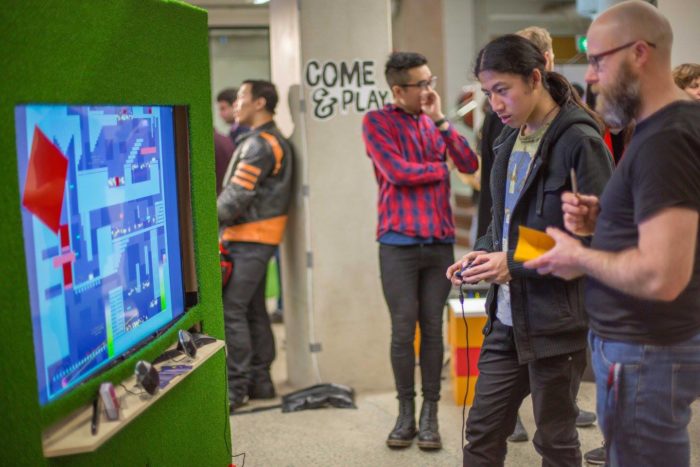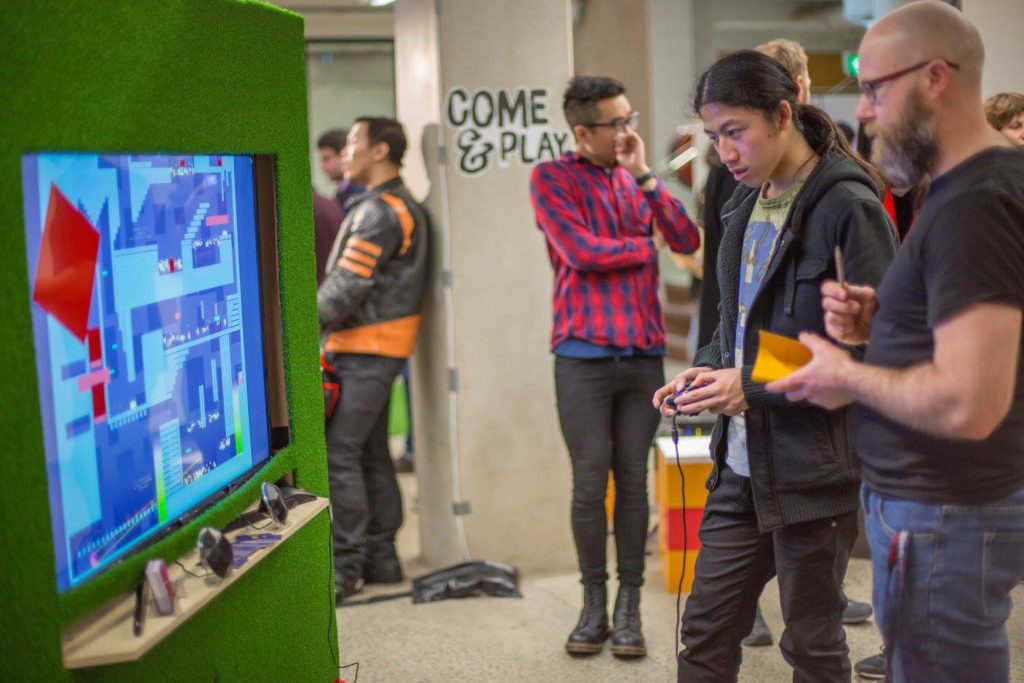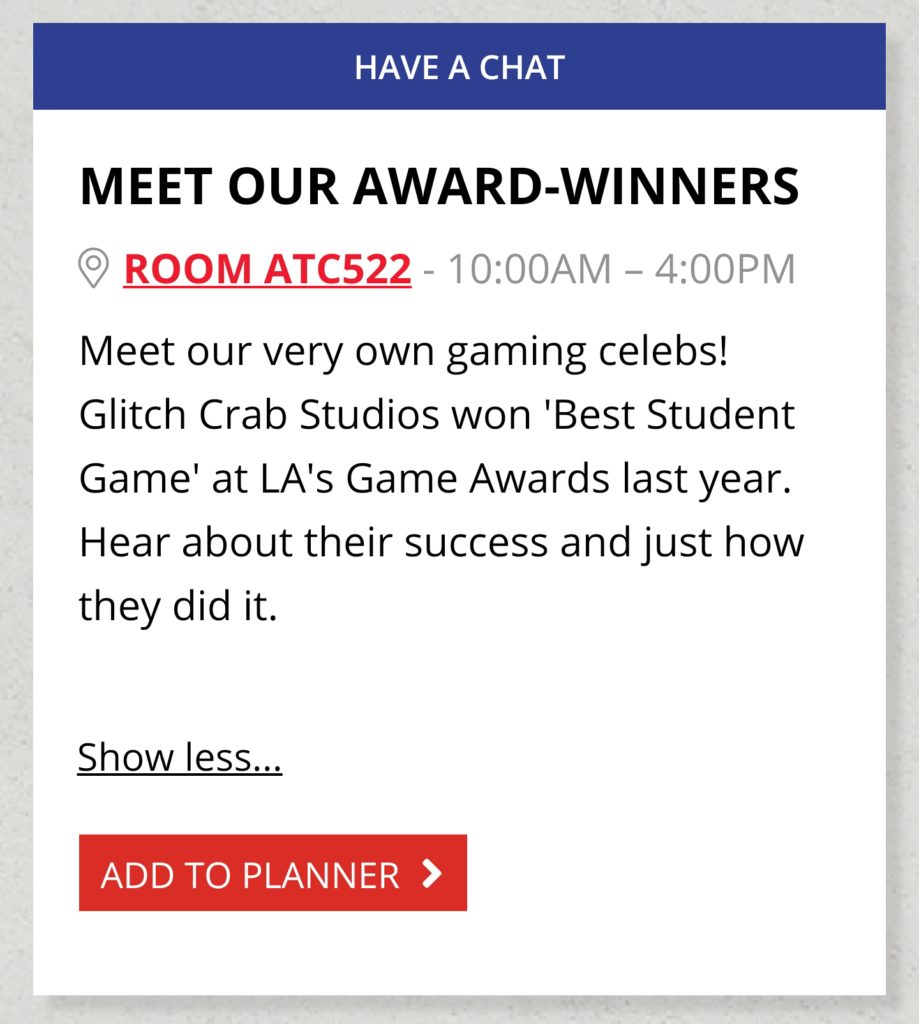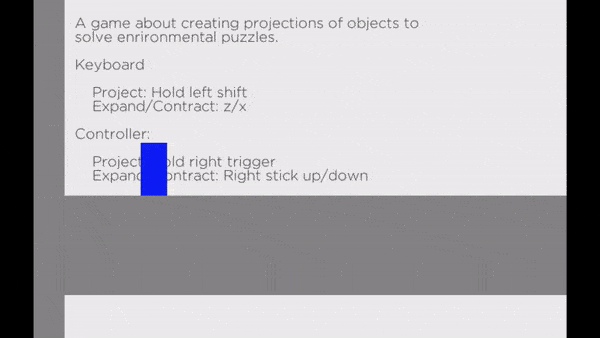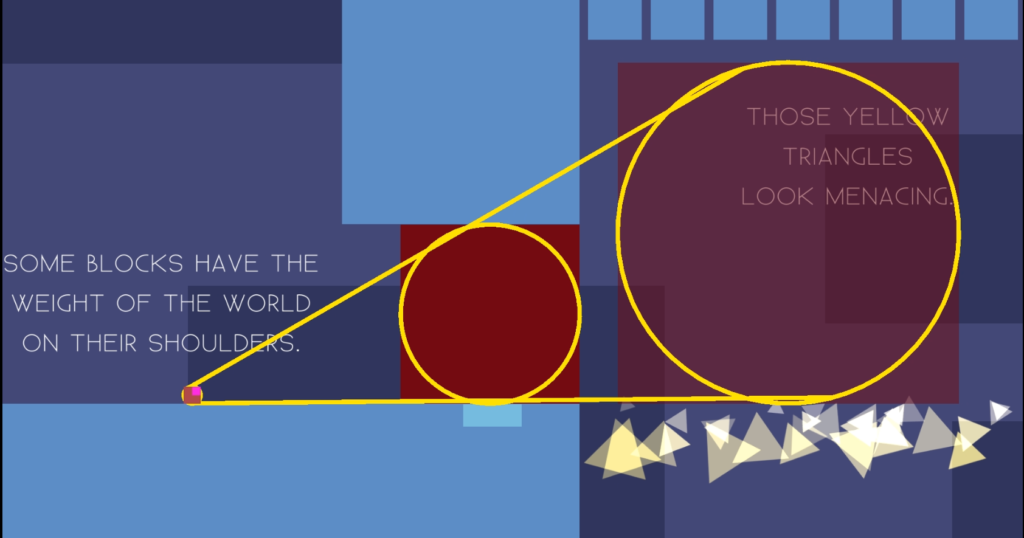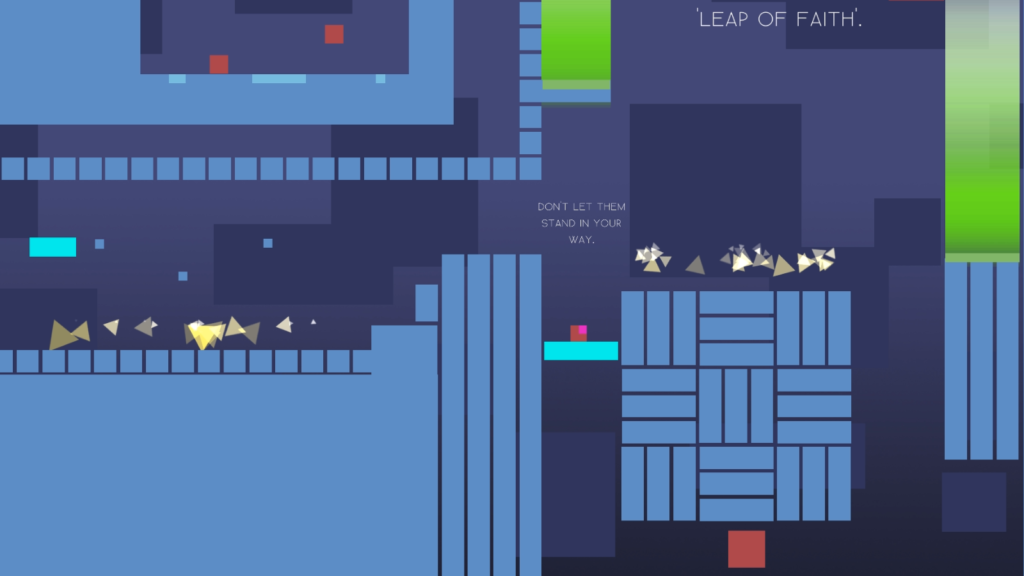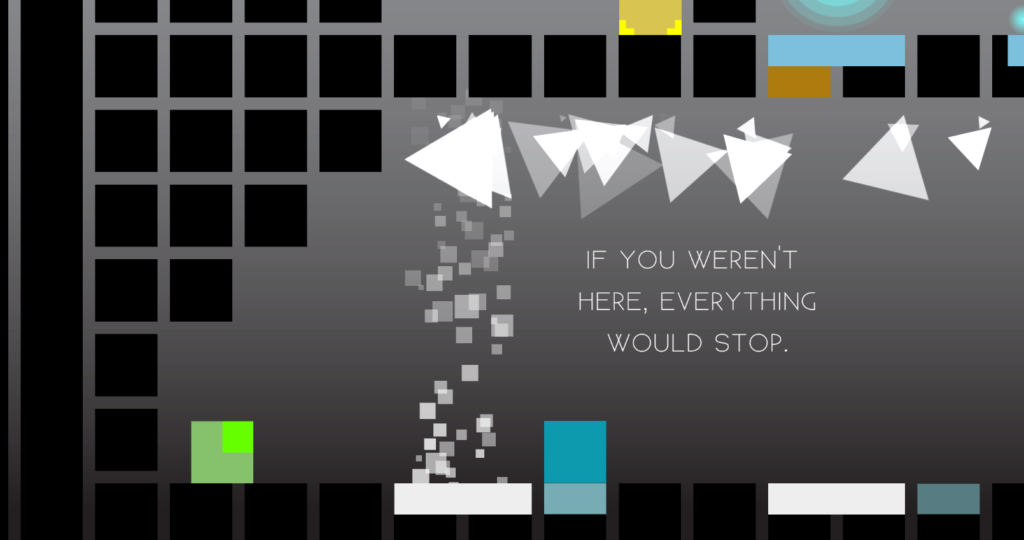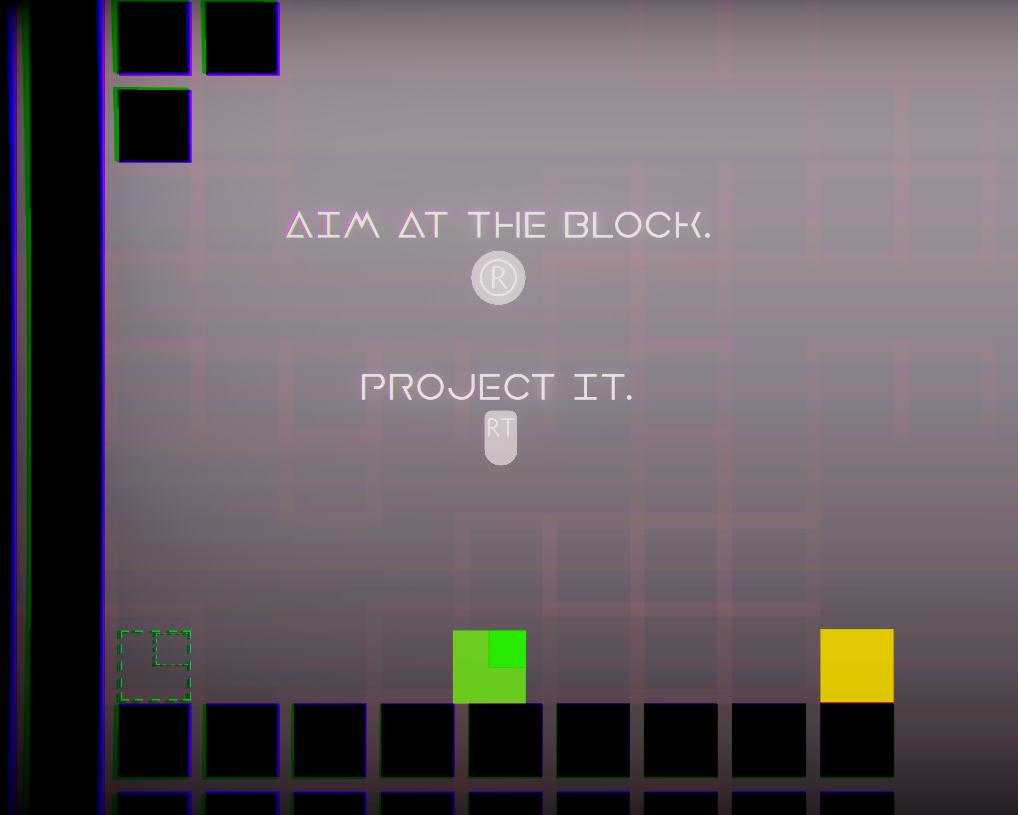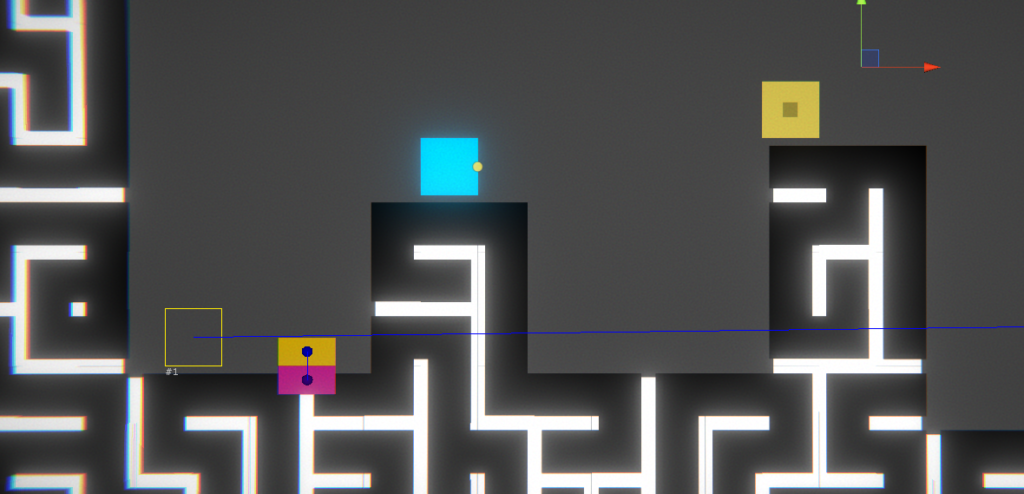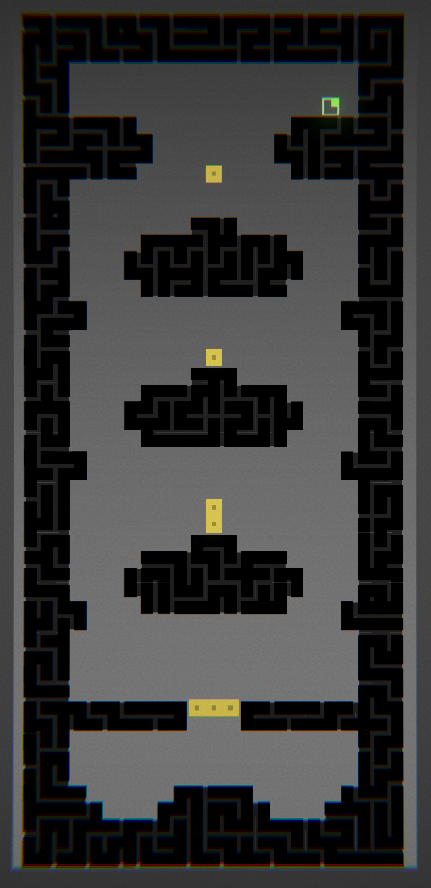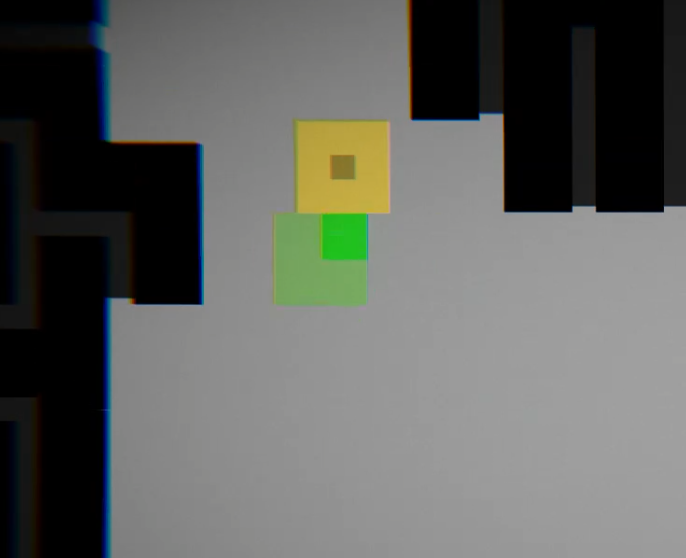Hi again everyone.
First off, sorry that it’s been a while since the last post. While I was busy and distracted by various other jobs and uni, I also got a bit disheartened with the blog and everything and took a bit of a break. That went on for a bit longer than I anticipated, and I got out of the habit of writing each week.
But I’m back now, and I have plenty to catch you up on!
The obvious big thing that has happened recently is PAX Australia, and we had a booth in the PAX Rising section!
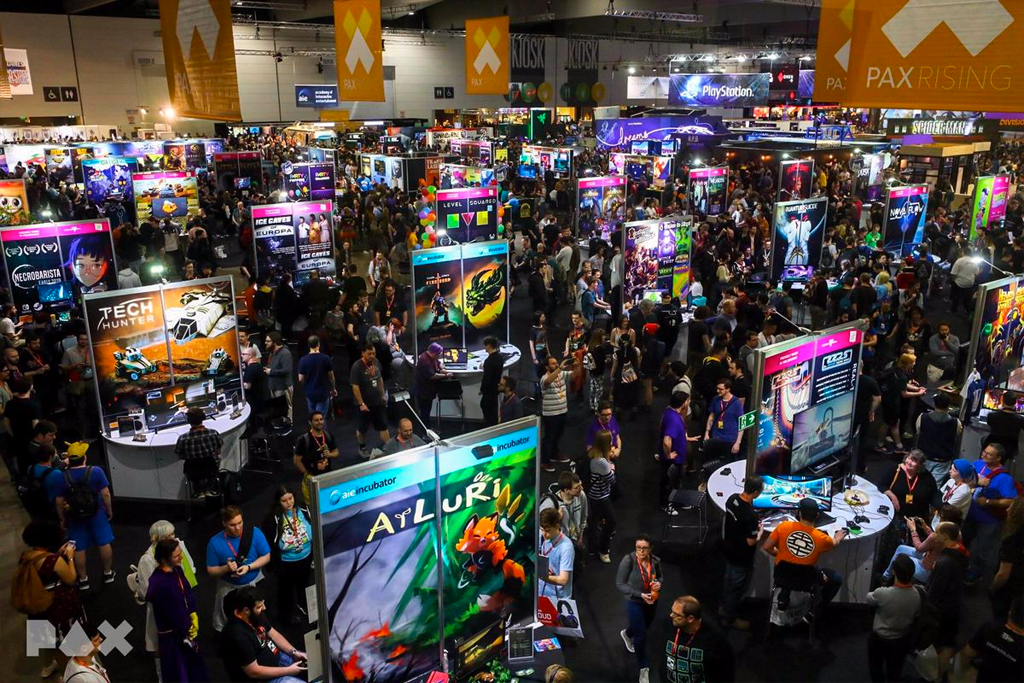
(Disclosure: I didn’t take this picture. It’s from David Rayfield’s excellent article on Junkee (PAX Australia Is Video Games, Minus The Worst Parts Of Internet) go read it, it’s tops.)
We were part of the Swinburne booth last year, so this wasn’t technically our first time showing at PAX. However, this was our first time out on a booth all of our own, and our first time dealing with all of the planning and logistics that came along with that.
For the next few weeks I’m going to write up some posts going over what we went through, what we learned and what I think we could do better if we ever do this again.
The Application
First of all, you need to apply to be part of the PAX Australia indie section. There’s a form to fill out on the PAX Australia website that covers things like team size, the game (or games) you are working on and the release window for your game. We completed this application in April 2018 and have been going through the planning ever since. I imagine if you work on a team that does a number of shows over the course of the year, you could have someone working full time just on arranging and organising exhibitions.
Once we were accepted for PAX we had to choose our booth size (the smallest) and arrange for payment. Fortunately this was offered in an installment program. We’re operating on whatever the tier beneath shoestring budget is, so the fee was a pretty hefty outlay for us. In fact, it’s been our largest single expense to date. I’ll come back to this in the final wrap up, but the fee to appear at PAX is going to be one of the big considerations in the final weigh up of whether this was worthwhile or not.
Planning
Over the six months between getting accepted to PAX and the show, we had to do quite a lot of planning and organising.
I’m going to leave aside the fact that we had to get our game into order and have a workable demo. Obviously that’s important, but that’s not what I’m going to concentrate on here. Basically, I’m going to go into all the non-game development stuff that we dealt with in preparing for PAX.
The longest lead time was ordering all of the things that we needed produced in time for PAX, things like our pins, business cards, shirts and so on – everything that had to be shipped to us. We successfully arranged for all of this well in advance and had everything arrive in time. We were pretty well off in this regard, as we had already had practice organising these things for the previous year when we had been on the Swinburne stand. In fact, we even re-used our shirts from the previous year and ordered a re-print of the same badges. So that all went according to plan.
I wrote up a small spreadsheet going over all of the bits and pieces that we were going to need to run the stand. And started to organise who was going to volunteer their gear.
In a bigger company this would be covered by the company, either bringing along their own things, or buying stuff once they arrived at an overseas exhibition. But, again, less-than-shoestring budget, so we had to use our own equipment.
| Item |
Number Required |
Electrical tag required? |
| Computer |
2 |
Yes |
| Controllers |
2 |
No |
| Monitors |
3 |
Yes |
| HDMI cables |
3 |
No |
| Chairs |
2 |
No |
| Power board |
1 |
Yes |
| Keyboard |
1 |
No |
| Mouse |
1 |
No |
| Speakers |
2 |
Yes |
That’s the table that I put together to track what we needed, where it was coming from, and whether it would need to be tagged (electrical saftey tagged) once we were at PAX.
There are a few things that were left off there, I now know. things like batteries for the controllers, back up controllers (for if/when something goes wrong), spare cables and such. Also it turned out that chairs are provided with the booth, so we didn’t need to take those along ourselves (didn’t find that out til I had already lugged the chairs into town though…).
I ran into a problem with the HDMI cables as well. Our design was to have Level Squared playing on two computers facing out at 45 degrees, with a single monitor in the centre playing a looped video of gameplay footage to draw people to the booth. It didn’t occur to me in advance, but there was only one HDMI port on each of the computers that we had, so I had to get another type of cable to run the remaining screen. Luckily I have a big box of cables at home, so I was able to grab one of those and sort it all out.
Finally, we needed to work out a roster for the booth, to make sure that everyone had a go on the booth and that no one person was there for too long each day. This is probably the one time that our team being so big is an advantage. We were able to arrange it so that no-one was rostered on for more than a half day at a time, and no-one had any more than two shifts across the weekend.
But in all, our planning and organisation went pretty well and we had everything that we needed arranged pretty well in advance.
Set up
…Except that there wasn’t anyone available to help with bump-in. So I ended up having to do that alone.
Which wasn’t all bad. I didn’t have to deal with anyone else mucking anything up. Though it would have been handy to have someone to send off to get things, or to help lift some things.
But I’m not going to lie, I was feeling pretty tense. There were a lot of things that I could see going wrong and I started to get a little bit lost in all the problems that I was trying to solve without making too much advance on the actual booth construction.
BUT, there were a bunch of other developers around who were also setting up their own booths, some that I knew and others that I met there. And many people dropped by to say hello and see how I was doing and offered to help with setting up. And that was really great, and it made me very happy to be part of such a nice group of people.
So it all worked out alright. Set up took around 4 hours all up, including a trip into the city to buy speakers. And once I was done, the booth looked like this:
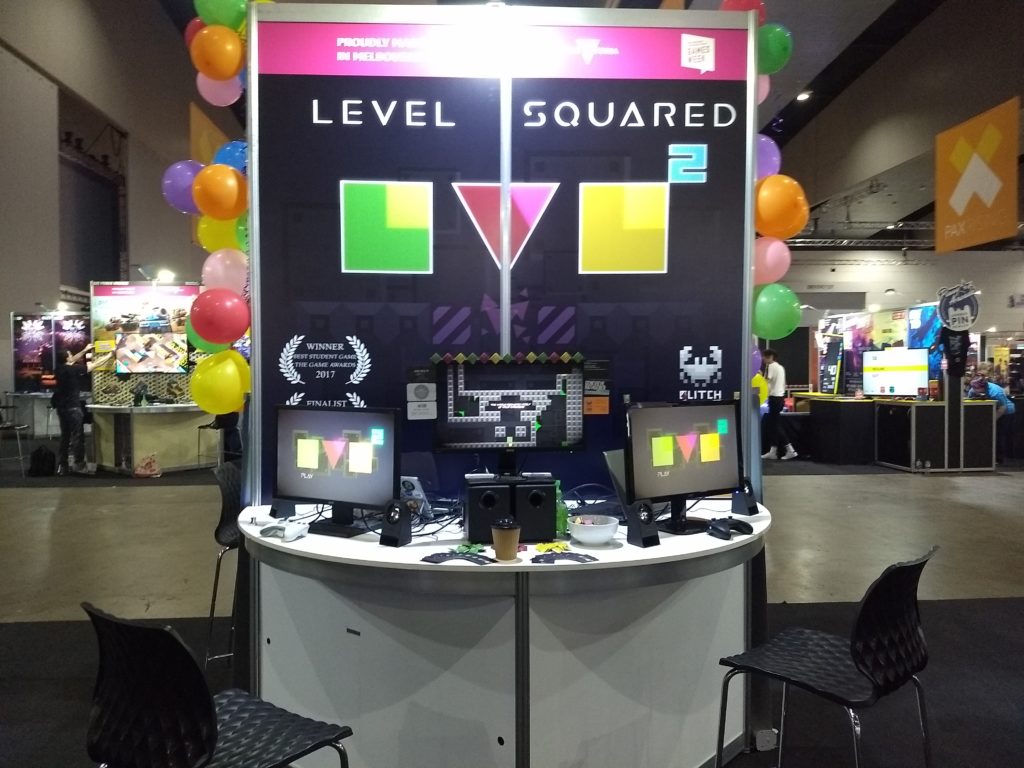
Now all it had to do was last through 3 days of PAX…
I’m already over 1000 words so I’m going to break this up into a few weeks worth of posts.
Next week I’ll go over our day to day operations, running the booth and bump out. And then the week after I’ll cover lessons that we learned and what I would do different next time.
See you then!
